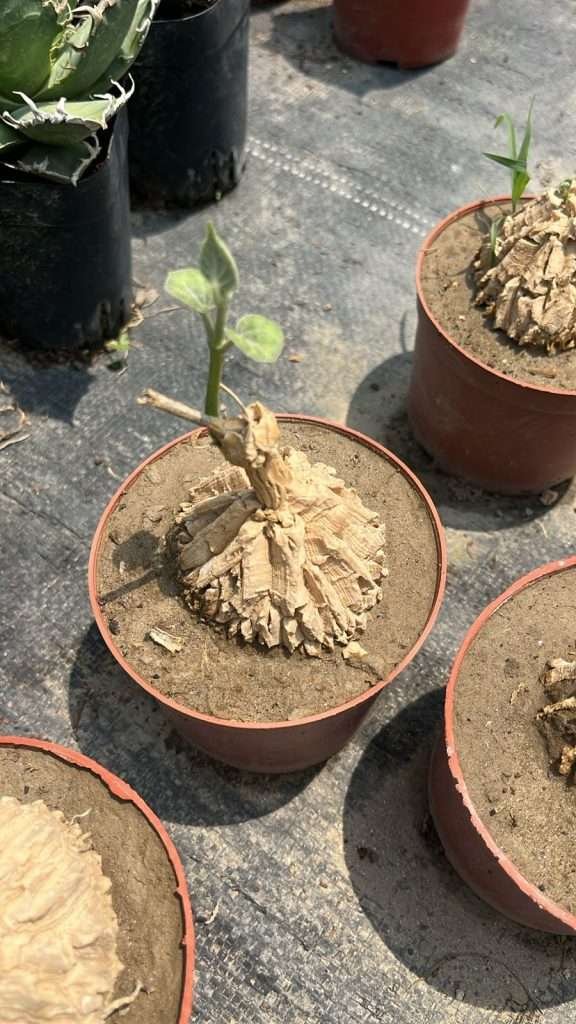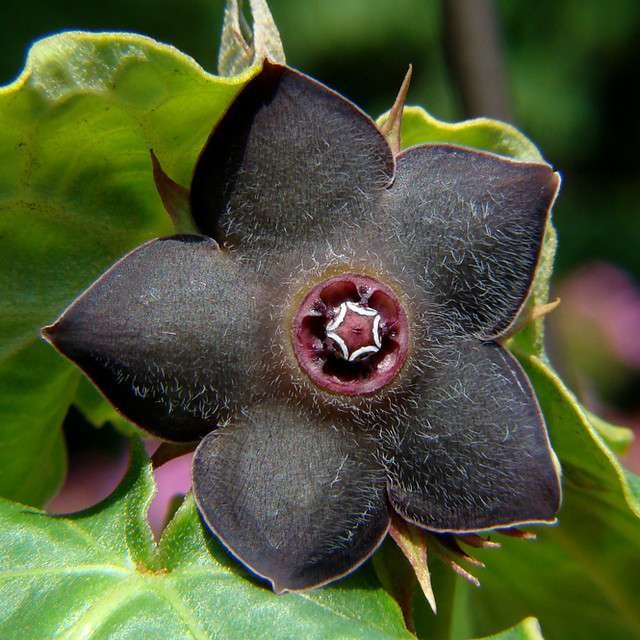Care Instructions for Fockea Edulis
Introduction to Care Instructions for Fockea Edulis : Click here to Buy Now
The Fockea Edulis is a remarkable member of the Apocynaceae family, primarily native to South Africa. This caudex plant, often recognized as a unique succulent, has gained popularity among plant enthusiasts due to its distinct characteristics and ease of care. As an excellent example of a caudiciform plant, Fockea Edulis showcases a thickened stem or tuberous root that stores water, allowing it to thrive in arid environments while providing visual intrigue.
One of the most distinctive features of Fockea Edulis is its climbing nature. The plant produces long, slender stems that can trail or climb across a trellis, making it an aesthetic choice for indoor spaces or gardens. Its succulent leaves are typically oval and exhibit a deep green hue, which contrasts beautifully with the tuberous root system. This root not only acts as a water reservoir but also contributes to the overall charm of the plant, often becoming a focal point for those cultivating it.
Beyond its unique physical attributes, the Fockea Edulis has become a favorite among collectors and gardeners alike due to its resilience and adaptability. In cultivation, it is essential to replicate its natural habitat, which includes well-draining soil and ample sunlight. Understanding the care requirements of this South African succulent is vital, as it will determine the plant’s overall health and longevity. The Fockea Edulis is not just a plant; it is a testament to nature’s incredible adaptations and a rewarding addition for anyone interested in caudiciform plants. Its intriguing combination of form and function has solidified its status as a must-have plant for succulent lovers everywhere.
Ideal Growing Conditions (Care Instructions for Fockea Edulis)
To successfully cultivate Fockea edulis, also known as the South African succulent, it is essential to provide the right growing conditions that mimic its natural habitat. An integral aspect of Fockea care is ensuring that the plant receives the proper amount of light. Ideally, Fockea should be placed in a location where it is exposed to indirect sunlight for several hours a day. This helps to prevent the leaves from burning while still providing enough light to encourage healthy growth.
Temperature is another critical factor when creating an optimal environment for this caudex plant. Fockea edulis thrives in warm, tropical climate conditions. Therefore, it is recommended to maintain indoor temperatures between 20°C to 30°C (68°F to 86°F). Such temperatures help replicate the conditions of its native habitat, promoting vigorous growth and a strong caudiciform structure.
Soil quality is equally important for the health of Fockea. This succulent requires a well-draining soil mixture to avoid root rot, which can be fatal. A combination of cactus mix and perlite or sand can create an ideal substrate that provides sufficient drainage and aeration. It is advisable to avoid regular garden soil, as it tends to retain too much moisture.
Humidity levels play a crucial role in the overall health of the Fockea plant. While these succulents can tolerate a range of humidity levels, they prefer moderate humidity, which can typically be found in household environments. Using a humidity tray or misting the plant occasionally can help maintain an appropriate level. By focusing on these key factors—light, temperature, soil, and humidity—you can successfully create an ideal growing environment for your Fockea edulis and ensure its thriving presence in your plant collection.
Watering and Fertilization Practices (Care Instructions for Fockea Edulis)
Maintaining the health of your Fockea Edulis, a uniquely intriguing caudex plant, requires a thoughtful approach to watering and fertilization. As a South African succulent, this species is adapted to drought conditions, making proper hydration techniques crucial for its vitality. A balanced watering schedule is essential; the plant should be watered deeply but infrequently, allowing the soil to dry out completely between watering sessions. This method mimics its native environment, reducing the risk of root rot that can occur from overwatering.
Signs of overwatering include yellowing leaves, root decay, and a mushy stem. Conversely, underwatering may display symptoms such as shriveled leaves and stunted growth. Regularly observe your Fockea Edulis to determine its water needs based on environmental conditions, considering factors such as temperature and humidity. In general, it is best to err on the side of underwatering, as succulents like the Fockea Edulis can tolerate dry spells better than excessive moisture.
Fertilization is another critical element in the overall care of this caudiciform plant. The most suitable fertilizers for Fockea Edulis are balanced, diluted formulations designed for cacti and succulents. During the growing season, typically from spring to summer, apply a diluted fertilizer once every four to six weeks to support healthy growth. As the plant enters its dormancy period in the autumn and winter months, reduce or cease fertilization to allow the plant to rest. By adhering to these specified watering and fertilization practices, you can ensure that your Fockea Edulis thrives in its environment, showcasing the remarkable characteristics of this exceptional succulent.
Common Pests and Diseases (Care Instructions for Fockea Edulis)
Fockea edulis, renowned as a unique caudex plant and a popular South African succulent, is not immune to various pests and diseases that can hinder its growth. Understanding these issues is crucial for maintaining the health and vitality of your Fockea edulis. One of the most common pests affecting this succulent is the aphid. These small insects feed on the plant’s sap, potentially leading to leaf curling and stunted growth. Preventative measures include regularly inspecting the plants for infestations and keeping the foliage clean. ( Care Instructions for Fockea Edulis)
Should an aphid infestation occur, natural remedies such as introducing ladybugs, which are natural predators, can help control the population. In cases of severe infestation, organic insecticidal soap can be effective, but it is critical to follow the application instructions closely to avoid harming the plant. ( Care Instructions for Fockea Edulis)
Another significant issue that can affect Fockea edulis is root rot. This condition typically arises from overwatering or poorly draining soil, resulting in the roots becoming mushy and discolored. To prevent root rot, it is important to use a well-draining potting mix and to allow the soil to dry out between watering. If root rot is suspected, removing the plant from its container and examining the roots is advisable. Healthy roots can be treated with fungicides, while diseased roots should be cut away to prevent further spread. ( Care Instructions for Fockea Edulis)
In addition to aphids and root rot, Fockea edulis may face challenges from mealybugs and spider mites. Mealybugs can be treated with a mixture of water and dish soap, while spider mites thrive in dry conditions, so maintaining adequate humidity can deter them. Keeping your plant free from debris and maintaining optimal growing conditions will not only mitigate these challenges but ensure robust growth for your beloved caudiciform. ( Care Instructions for Fockea Edulis)


